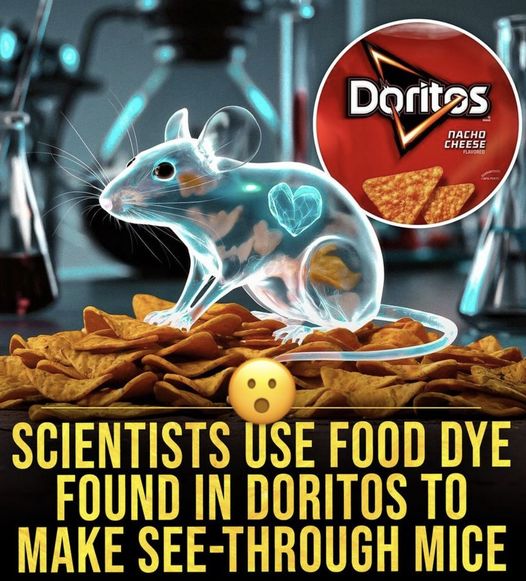Invisibility used to be something people could only dream of. But as it turns out, the secret lay in one of the most popular snacks in America: Doritos. A new study used tartrazine, a yellow-orange food coloring found in Doritos (and many other products), on live mice to make their skin see-through. This may seem like magic, but the researchers explain that the method is relatively simple, and it can revolutionize medical examinations.
Tartrazine Instead of Endoscopies

Researchers at Stanford University sought a way to examine tissue and organs in the body without any invasive or uncomfortable technology. Imagine going to the doctor with pain complaints and instead of an endoscopy, he puts a yellow mixture on the area and does an examination without the hassle of wires and probes.
“In human medicine, we currently have ultrasound to look deeper inside the living body,” Ou said. “Many medical diagnosis platforms are very expensive and inaccessible to a broad audience, but platforms based on our tech should not be.”
Read More: Scientists Reveal New Findings About Older Adults Who Take Vitamin D
“Magical” Biological Imaging

The researchers chose tartrazine because its molecules absorb blue and ultraviolet light. They hypothesized that this would make it easier for light to shine through the rodents’ skin.
“For those who understand the fundamental physics behind this, it makes sense; but if you aren’t familiar with it, it looks like a magic trick,” said Zihao Ou, the lead author of the study who is now an assistant professor of physics at The University of Texas at Dallas.
He wanted to find a way to use his expertise in physics, engineering, and materials science to help people on a practical level. “So I decided to learn some biological imaging techniques and bring my background in physics and materials science to biomedical science,” Ou said. “As a postdoc, I believe my background in physical science brought a unique perspective to our biological imaging research.”
The Study

First the researchers tested the yellow dye mixed with water on raw chicken breast and samples of mice tissue. Then they rubbed the mixture onto the mice’s heads and abdomens. Once the dye set, “the skin, muscle, and connective tissues [turned] transparent in live rodents,” the researchers write in the journal article.
“It takes a few minutes for the transparency to appear,” Ou said. “It’s similar to the way a facial cream or mask works. The time needed depends on how fast the molecules diffuse into the skin.” After that, the researchers were able to observe the blood vessels on the brain’s surface, and the internal organs and muscle contractions in the abdomen.
And once the scientists washed off the dye, the mice’s skin returned to normal, and the rest of the tartrazine came out naturally through their urine. “It’s important that the dye is biocompatible — it’s safe for living organisms,” Ou said. “In addition, it’s very inexpensive and efficient; we don’t need very much of it to work.”
What is Tartrazine?

Tartrazine, also called FD&C Yellow No. 5, is a monoazo dye that looks bright yellow. So it’s used in a variety of goods, from food to medications, from cosmetics to dietary supplements, from candy to drinks, and so on. It’s currently regulated by the USA’s FDA, JEDFA, and European Commission Regulation, revolutionizing Optical Research.
Revolutionizing Optical Research

However, the tartrazine in Doritos is nowhere near the amount needed to make human skin invisible. For one, human skin is much thicker than mice’s, so the researchers don’t know how much is needed to have the same effect. But this study is only the first of many. Not only do the scientists plan on continuing to investigate this dye, but they also plan to experiment with other substances that might work even better.
“Optical equipment, like the microscope, is not directly used to study live humans or animals because light can’t go through living tissue,” Ou said. “But now that we can make tissue transparent, it will allow us to look at more detailed dynamics. It will completely revolutionize existing optical research in biology.”
